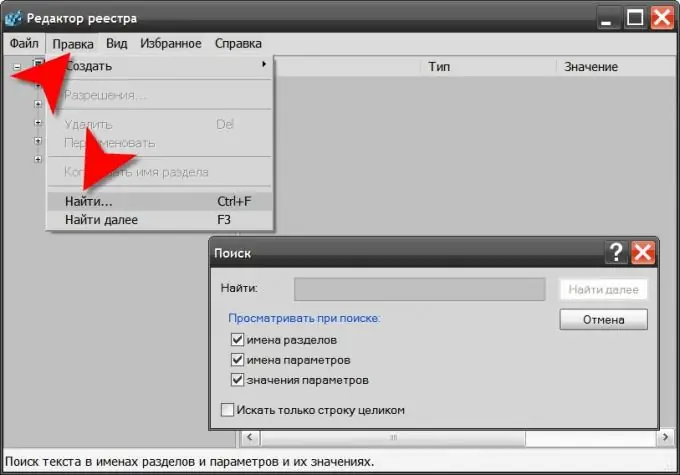The Windows operating system registry contains tens of thousands of entries, each of which is not just a variable-value pair, but also a multi-level set of hierarchical sections and subsections that often have the same name. "Manual" search in it is almost impossible, therefore programs designed to work with the registry have built-in search functions.

Instructions
Step 1
Start the standard Windows Registry Editor, which is included in the base set of the operating system components. To call it, a separate item has been added to the context menu of the shortcut "My Computer" on the desktop, which is designated as "Registry Editor". You can also open it through the program launch dialog - this is the window that appears after clicking on the "Run" item in the main menu on the "Start" button. In this window, you need to enter the regedit command and click the "OK" button.
Step 2
Set the search area - select the section in the left pane of the program interface where you need to search for the value you are interested in. If you want to search the entire registry, then click the line "My Computer". If you know in which branch the desired value is located, then it is better to click it - this way the search operation will take much less time.
Step 3
Expand the "Edit" section in the menu and select the "Find" item. As a result, a separate window will open for entering a search query. You can also start it by pressing the CTRL + F key combination. In this window, type the text that the program should look for in the registry. If you know whether the desired value is the name of a section ("branch"), parameter ("key"), or a value, then uncheck unnecessary checkboxes - this will also speed up the search procedure. Click on the "Find Next" button to start the process.
Step 4
Press the F3 key to continue searching if the editor finds a similar value and stops the search process, but the value is not what you want.
Step 5
Registry programs from other manufacturers may provide you with the ability to customize your search criteria in more detail. For example, the RegAlyzer program allows you to search separately by data type, by the date the parameter was created, and use regular expressions to search.






